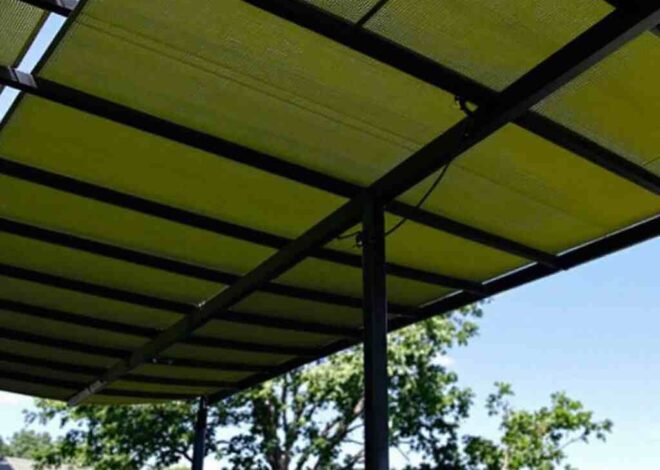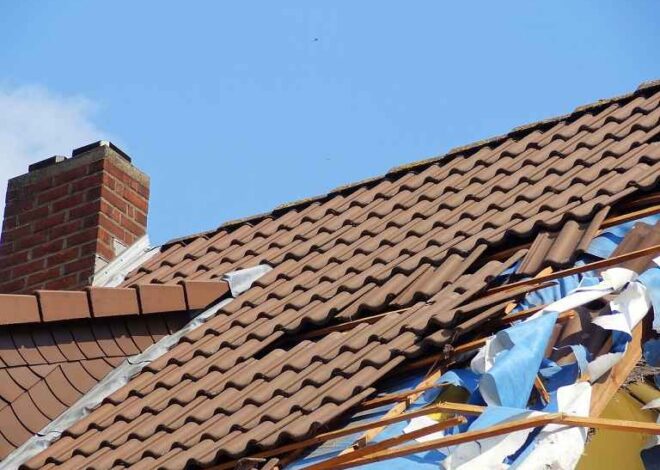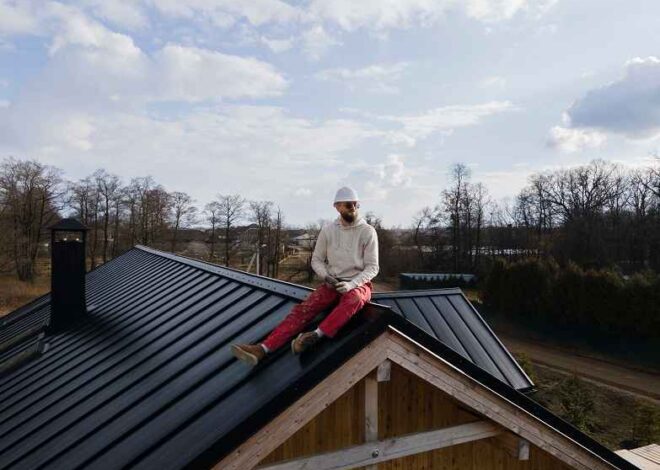
Protect Your Investment: Essential Maintenance Tips for Roof Warranties
When it comes to homeownership, your roof is one of the most valuable shields against the elements—serving as the first line of defense for you and your loved ones. But did you know that neglecting proper maintenance could put your roof warranty at risk? That’s right! Just like a car needs regular oil changes and check-ups to keep running smoothly, your roof requires ongoing care to ensure its longevity and effectiveness. In this blog post,”Roof Warranties” we’ll dive into essential maintenance tips that not only safeguard your investment but also help you get the most out of those all-important warranties. Whether you’re a seasoned homeowner or just starting out, these actionable insights will empower you to protect what matters most—your home sweet home! So grab a cup of coffee, roll up your sleeves, and let’s get started on maintaining that sturdy shelter over your head!
Introduction: Why roof maintenance is important for protecting your investment
Your roof is more than just a protective covering; it’s an investment that shields your home from the elements and enhances its value. Without proper maintenance, however, this vital asset can quickly become a source of headaches and costly repairs. Roof warranties exist to provide peace of mind, but they come with responsibilities. Understanding how to protect your warranty through diligent upkeep is essential for safeguarding both your investment and the comfort of your home. Let’s dive into why roof maintenance matters and how you can keep your warranty intact while ensuring your roof stands strong for years to come.
Understanding Roof Warranties: Types of warranties and what they cover
Roof warranties typically fall into two main categories: manufacturer warranties and workmanship warranties.
Manufacturer warranties cover defects in materials used during the roofing installation. If shingles curl or fade prematurely, this warranty kicks in to protect your investment.
Workmanship warranties, on the other hand, focus on the quality of installation by a contractor. They ensure that any issues arising from improper installation are rectified at no extra cost within a certain timeframe.
Some roofs may come with combined coverage, offering both material and labor protection for peace of mind. It’s crucial to read the fine print and understand what is included.
Different manufacturers might have various terms regarding duration and limitations, making it essential to know exactly what you’re entitled to under your specific agreement before proceeding with repairs or maintenance work.
Key Factors That Can Void Your Warranty: Common mistakes to avoid
Neglecting regular maintenance is a surefire way to jeopardize your roof warranty. If you skip inspections or fail to address minor issues, you may find yourself facing unexpected costs down the road.
Using improper materials during repairs can also void your warranty. Stick with approved products that align with your roofing system’s specifications. This ensures compatibility and maintains coverage.
Another common mistake is ignoring manufacturer guidelines. Each warranty has specific requirements, like using certified contractors for installations or repairs. Disregarding these stipulations can lead to complications when making a claim.
Lastly, failing to keep records of maintenance tasks might come back to haunt you. Document everything—inspections, cleanings, and repairs—to provide proof of proper care if needed later on. Taking these precautions protects both your investment and peace of mind.
Essential Maintenance Tasks for Keeping Your Roof Warranty Valid:
Regular inspections are vital for roof warranty maintenance. Schedule checks at least twice a year, particularly after severe weather events. Look for signs of damage or wear.
Cleaning gutters and downspouts is another critical task. Clogged gutters can lead to water pooling, which may cause leaks or structural issues. Clear them out regularly to ensure proper drainage.
Address small repairs promptly. Ignoring minor issues can escalate into costly problems that jeopardize your warranty coverage.
Proper ventilation and insulation should not be overlooked either. They help regulate temperature and prevent moisture buildup, both of which can significantly impact your roof’s longevity.
Finally, keep the area around your roof clear of debris and overhanging trees. Falling branches can cause immediate damage while accumulated leaves trap moisture against shingles, leading to decay over time.
-
Regular Inspections
Regular inspections are a vital part of roof warranty maintenance. They allow you to catch potential problems before they escalate into costly repairs.
Schedule inspections at least twice a year, ideally in spring and fall. Look for signs of wear, such as cracked shingles or rusted flashing. Early detection can save both time and money.
Pay attention to the interior as well. Check for water stains on ceilings or walls, which could indicate leaks. Document your findings; this will be helpful if any warranty claims arise later.
Don’t forget about seasonal changes either. Heavy snowfall or storm damage can create unique challenges that need immediate attention.
Consider enlisting a professional inspector if you’re unsure about what to look for or how to assess the condition of your roof properly. Their expertise ensures nothing is overlooked while keeping your investment protected.
-
Cleaning Gutters and Downspouts
Cleaning gutters and downspouts is vital for roof warranty maintenance. Clogged gutters can lead to overflow, causing water damage to your roof and home.
Debris accumulation invites mold and mildew, which can compromise the integrity of roofing materials. Regularly removing leaves, twigs, and dirt helps maintain proper drainage.
Inspect downspouts for blockages too. If they’re clogged, water may not funnel away from your foundation effectively, resulting in potential structural issues over time.
Aim to clean your gutters at least twice a year—more often if you have overhanging trees or live in a storm-prone area. Use gloves and safety gear while performing this task.
If climbing ladders feels daunting, consider hiring a professional service that specializes in gutter cleaning. It’s better to be safe than sorry when it comes to protecting both your investment and warranty.
-
Addressing Small Repairs Promptly
Small repairs may seem insignificant at first, but neglecting them can lead to bigger problems down the line. A tiny leak or a missing shingle can quickly escalate into extensive damage if not addressed promptly.
Keep an eye out for any signs of wear or potential issues. Look for cracks, loose flashing, or water stains on your ceiling. These could indicate underlying damage that needs immediate attention.
Taking action early not only protects your roof but also preserves your warranty coverage. Many warranties have stipulations regarding maintenance and timely repairs. Ignoring these requirements may leave you vulnerable when you need assistance most.
You don’t have to be a roofing expert to handle minor fixes. Simple tasks like sealing small leaks with roofing cement can extend the lifespan of your roof significantly. Remember, proactive care is key in safeguarding both your investment and home comfort.
-
Maintaining Proper Ventilation and Insulation
Proper ventilation and insulation are vital components of any roofing system. They work together to regulate temperature and moisture levels, preventing potential damage.
When your attic is well-ventilated, hot air can escape in the warmer months. This helps prevent heat buildup that can lead to shingles warping or cracking. Conversely, good insulation keeps your home cozy during winter by retaining warmth.
Without adequate ventilation, condensation may form in cold weather. Over time, this trapped moisture can cause mold growth and rot within the structure of your roof.
Regularly check vents to ensure they’re not blocked by debris or insulation material. Additionally, consider installing ridge vents for improved airflow throughout your attic space.
Investing time into maintaining these aspects not only safeguards your investment but also prolongs the life of your roof warranty. A little attention now can save you from costly repairs down the line.
-
Removing Debris and Overhanging Trees
Debris accumulation on your roof can lead to serious issues, including mold growth and water damage. Fallen leaves, twigs, and dirt create a breeding ground for moisture that can compromise your roofing materials.
Regularly inspect your roof for any debris buildup. A clean surface allows for better drainage and reduces the chances of rot or leaks.
Overhanging trees pose another risk. Branches that touch or hang over your roof can scratch shingles and provide easy access for pests. Trim back these branches to maintain both the health of your roof and the trees themselves.
Consider scheduling seasonal inspections after heavy storms or windy weather. This ensures you catch any fallen debris before it causes problems. Additionally, keep an eye out for nests or other wildlife trying to make their home in unwanted places!
DIY vs Professional Maintenance: What tasks you can do yourself and when to hire a professional
When it comes to roof warranty maintenance, knowing what you can tackle yourself versus when to call in a pro is essential.
For basic tasks like clearing gutters or removing debris from the roof’s surface, DIY is often safe and manageable. These small jobs help prevent major issues down the line.
However, more complex repairs should be left to professionals. This includes fixing leaks, replacing shingles, or assessing structural integrity. Mistakes made during these projects could compromise your warranty.
If you’re ever unsure about a task’s difficulty level, it’s wise to consult an expert. They have the proper training and tools for thorough inspections that ensure everything remains intact under your warranty coverage.
Remember that some warranties also require proof of professional work for certain services. Keeping this in mind can save you headaches later on!
Extending the Life of Your Roof: Additional tips for maximizing your warranty coverage and prolonging the life of your roof
To extend the life of your roof and maximize your warranty coverage, consider scheduling routine professional inspections. These assessments can catch potential problems before they escalate.
Investing in high-quality materials during repairs is another key step. Opt for durable roofing products that align with manufacturer guidelines to ensure compatibility and longevity.
Keep an eye on vegetation around your home. Regularly trim overhanging branches to prevent damage from falling debris and limit moisture retention on the roof surface.
Consider installing a de-icing system if you live in colder climates. This can help manage ice buildup, which often leads to leaks and structural issues.
Lastly, maintain clear communication with your roofing contractor about any changes or concerns you may have regarding maintenance practices or warranty terms. Staying informed is essential for protecting both your investment and peace of mind.
Conclusion:
Protecting your investment in a roof goes beyond simply choosing the right materials and contractors. Understanding your roof warranty is crucial, as it can save you significant costs down the line. Regular maintenance plays a pivotal role in ensuring that your warranty remains valid while also extending the lifespan of your roofing system.
By staying on top of regular inspections and taking care of minor issues before they escalate, homeowners can avoid common pitfalls that might void their warranties. Simple tasks like cleaning gutters or maintaining proper ventilation may seem trivial but are essential for maximizing both coverage and roof longevity.
When considering whether to tackle maintenance projects yourself or hire professionals, it’s essential to assess both skills and safety. Knowing when to call in experts can help prevent costly mistakes.
In essence, being proactive about roof warranty maintenance not only gives peace of mind but also enhances the value of your home. A well-maintained roof is an asset that protects against unforeseen damage—ensuring your investment stands strong for years to come.


